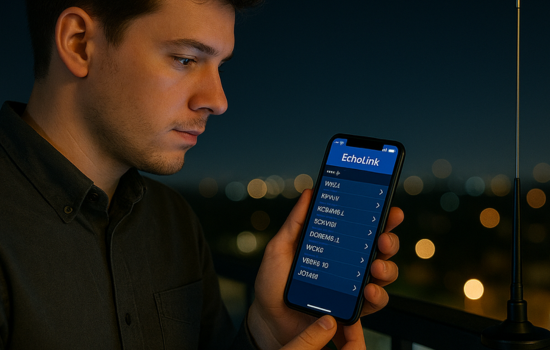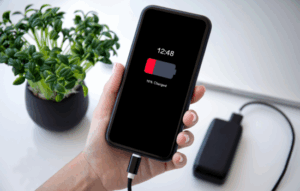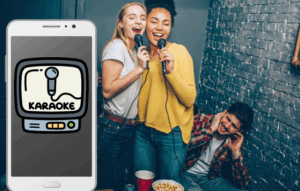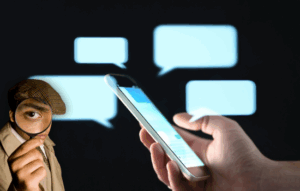Advertisements
The rebirth of amateur radio in your pocket
Talking to someone who lives on another continent, a fishing boat on the high seas, or a volunteer in the middle of an emergency without relying on cell towers seems like something out of a movie.
However, that is exactly what the amateur radio on your cell phone: a bridge between the centuries-old tradition of the airwaves and the convenience of mobile apps. With a simple tap, your phone becomes a portable station capable of connecting you to thousands of operators who still value the magic of communicating over the air, free from algorithms and firewalls.
Advertisements
Why is amateur radio still alive?
Unlike social media, this service has a mission recognized by international treaties: to experiment with technology, foster global friendship, and provide disaster relief. When hurricanes destroy commercial antennas or data collapses, amateur radio operators maintain contact using battery-powered equipment and protocols optimized for low power.
The license—mandatory in most countries—is not an insurmountable obstacle: a basic understanding of regulations and electronics is enough to obtain your call sign, the "registration" that authorizes you to legally broadcast.
Advertisements
See also
- Fortifying tea: boost your little friend naturally
- Optimize your battery
- Your Voice and Your Stage: Karaoke Now!
- Monitor conversations: take care of those you love most
- Boost your confidence with habits that activate your little friend
From transceiver and antenna to smartphone
For decades, getting into the hobby meant shelling out hundreds of dollars for a transceiver, coaxial cables, power supplies, and a chunk of roof to mount the antenna. Today, your phone's computing power, GPS, and voice codecs do much of the work.
What happens is a hybrid route: you send your voice to a server using mobile data, and from there, a physical repeater translates it back into radio waves. Halfway there, it travels through the "cloud," yes, but it ends up being broadcast and received by operators equipped with handheld talkies or base stations. This way, you can tap into the world of radio without installing a single pole on your rooftop.
First contact: installation and listening
The most popular entry point is called EchoLinkOnce you validate your callsign (or activate listen-only mode while studying for the exam), you'll see lists of connected repeaters and personal stations. By tapping a nearby node, your device goes into "monitor" mode, and you can begin receiving conference calls, greetings, or community service announcements.
Each transmitter appears with its call sign, signal strength, and even the approximate distance, something that used to take minutes for old-timers to calculate. Listening first familiarizes you with the Q code, the phonetic alphabet, and the etiquette of leaving three seconds of silence between interventions so others can enter.
Essential digital allies
- RepeaterBook Uses GPS to display the nearest analog and digital repeaters, their uplink and downlink frequencies, CTCSS tone, and operating mode (D-STAR, System Fusion, etc.). Useful when you're traveling and want to cover your bases with the best community antenna available.
- Ham Radio Tools It condenses a set of tools: a dipole calculator, a UTC board, a WSPR beacon decoder via microphone, and a small ADIF log to record each QSO. It also includes practice tests to prepare you for the license.
With these three applications the amateur radio on your cell phone covers registration, daily operations and learning curve with no more investment than a couple of taps in the store.
Audio and data best practices
Before pressing the virtual PTT, calibrate your microphone using the Echo Test room. Keep two fingers' distance between your mouth and the phone, use a headset to avoid feedback, and check that the data network is stable; 3G is usually sufficient, but interruptions cause jitter and fragment the voice. If you plan on listening for long periods, add a power bank: below 20 %, some phones reduce the processor frequency, and the codec loses quality. Finally, remember that your interlocutor may write down your call sign to confirm contact, so spell slowly using the Alpha-Bravo-Charlie system.
Climbing from listener to operator with own antenna
Once you've mastered the app, set progress goals. In the first month, try to log 50 short QSOs: city, name, and signal report. In the second, pass the license exam; the theory will become familiar after so many hours of listening. In the third, purchase an inexpensive UHF/VHF handheld and, using RepeaterBook's CSV lists, program all the repeaters in your area. If you live in an apartment, a magneto antenna mounted on the railing may suffice.
Anyone who falls in love with the hobby will soon want to explore HF: building a dipole out of wire and hanging it between two windows is the natural next step. Each new piece expands your range and increases the thrill of hearing your call bounce off the ionosphere to another continent.
Beyond the Chatter: Service and Science
Amateur radio isn't just about talking. Many groups organize emergency networks that operate during marathons, forest fires, or floods, when cell phones fail. Others collaborate with university students to track CubeSats or experiment with lunar and meteor bounces. What begins as a amateur radio on your cell phone It ends up motivating STEM projects, construction of experimental antennas and propagation studies that even NASA observes with interest.
Common mistakes and how to avoid them
Talking close to the microphone causes distortion; abruptly moving the phone causes the app to renegotiate the data flow; failing to observe silences between turns congests the network. The solution is simple: moderate pressure, hands-free, and attentive listening. Don't forget the rules either: even if part of the connection travels over the internet, you're still subject to the rules regarding power, language, and courtesy that apply to any licensed operator.

The undulating adventure
When your voice bounces from a Korean repeater to a Norwegian cruise ship and returns as a friendly, static-filled greeting, you'll understand why amateur radio keeps its flame alive. Installing the app, calibrating your audio, and launching into "CQ CQ" is the first step on a journey that can lead you to setting up your own HF station, assisting in rescues, or simply cultivating friendships across time zones. It all fits in the palm of your hand, waiting for the impulse of your curiosity.
Download the apps
EchoLink – Android / iPhone
RepeaterBook – Android / iPhone
Ham Radio Tools – Android / iPhone




